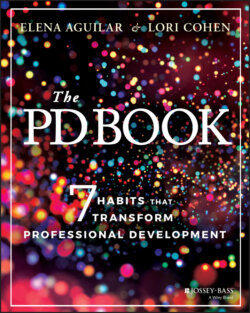Читать книгу The PD Book - Elena Aguilar - Страница 14
The Definition
ОглавлениеLet's start with naming the obvious elements of PD: It's a way that you continue developing your knowledge and abilities after you've met the baseline requirements for a position.
Many professions have expectations around ongoing development. You may need to renew a license or certificate in order to continue practicing in your field or you may need to develop additional skill sets to be promoted. In many organizations, there's also an assumption that the baseline may change: Although you're qualified when you're hired, you'll face new challenges and will need to continue developing skills. Whether you're in education or medicine or insurance law, we can count on the fact that changes in policy or demographics, advances in research and knowledge, or a shift in an organization's commitment will require continued learning. In schools, continued learning is required when a region experiences an influx of immigrants and teachers need to learn how to teach English learners, when new findings on the neuroscience of learning require that teachers acquire additional skills for teaching math, or when a school board adopts a resolution to create equitable schools.
We may also need to engage in professional development to refine a particular skill set. For example, the skills needed by positional leaders are extensive—whether they lead a school or a nonprofit. Even after leaders complete an administrative credential or get an MBA, they might need to further develop communication skills, emotional intelligence, or the ability to work across lines of difference. No one is ever done with their learning, and when learning happens in the context of a profession, it's called PD.
